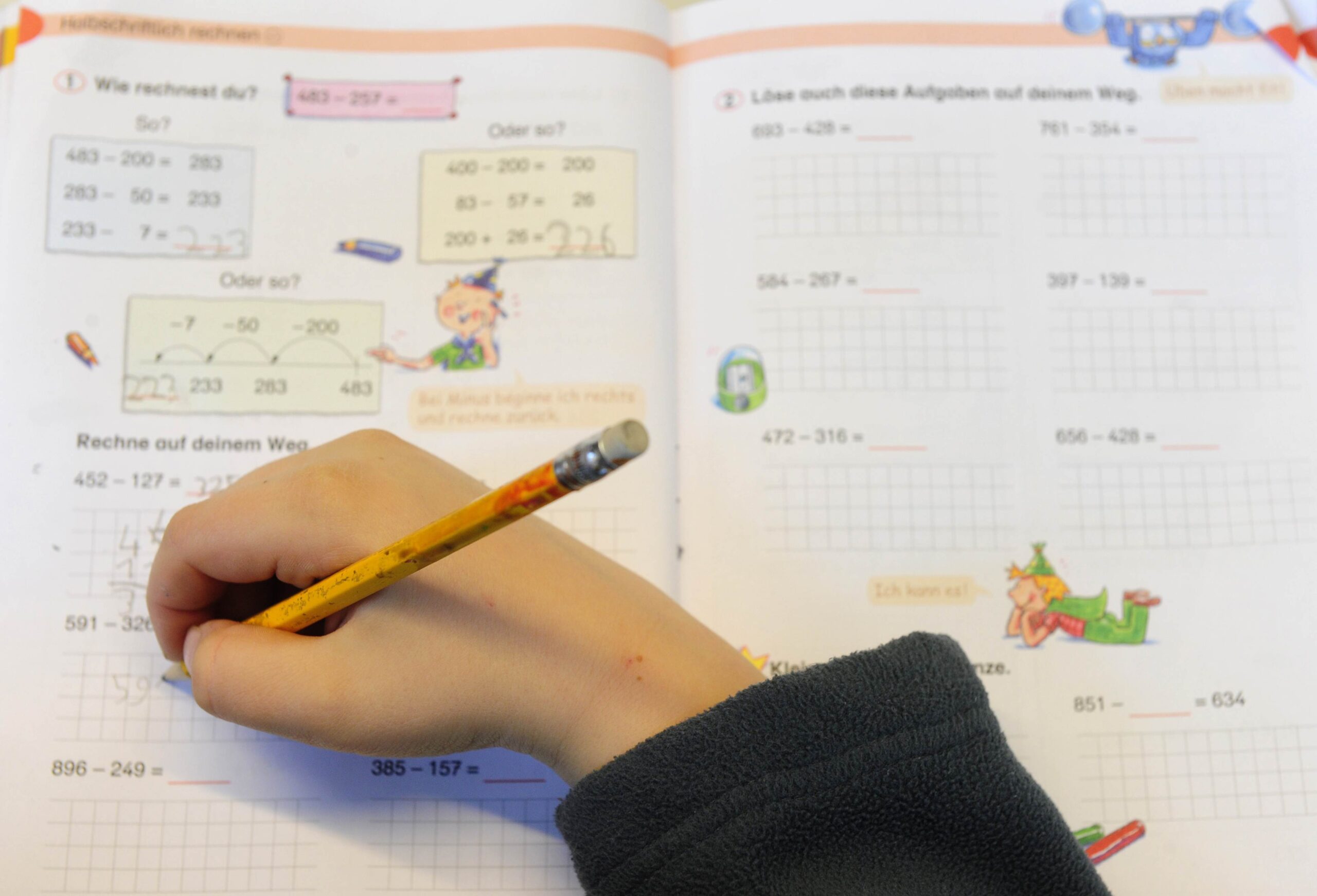$190 Billion in COVID Relief Funds to School Districts Both Bonanza and Burden
News Analysis
The federal government poured $190 billion into state coffers in 2020 and 2021 to help schools deal with the effects of COVID-19 on the nation’s education system.
Some school districts spent the funds quickly on tutoring, teacher salaries and school bus Wi-Fi. Other districts struggled to find the right use of the money in order to meet federal program deadlines.
As the first of three spending deadlines approaches, a report examines the way the nation’s largest school districts have used the money so far and how much remains unspent.
Education Relief Funding
In order to prepare the nation for possible school closures, Congress created the Elementary and Secondary School Emergency Relief Fund.
ESSER was increased twice in the 12 months that followed, totaling nearly $190 billion. These allocations were referred as ESSER I and II and ESSER III.
ESSER 1, which provided $13.2 Billion to schools, has been authorized by the Coronavirus Aid Relief and Economic Security Act, March 2020. This Act provides emergency relief for schools that are affected by the coronavirus.
ESSER II was able to add $54.3 billion through the Coronavirus Response and Relief Additional Appropriations Act.
ESSER III expanded the fund by $122 billion in March 2021 through the American Rescue Plan Act to help safely reopen and sustain school operations and address problems in the student population caused by the disruption.
Based on these criteria, funds were allotted to the states. plans Approved by the Department of Education. The formula for Title I funding was used to determine the amounts for each state. This federal aid is based on the percentage children from low-income households.
Non-profit private schools are eligible to receive ESSER funding through their local education agency, which is usually a district school district.
By the end of 2021, state education agencies had received the largest single federal allocation for K-12 education in the nation’s history, more than three times the federal budget for education in 2019 and amounting to some $3,700 per student.
Ninety percent of that amount was to be passed through to local agencies, creating a $171 billion windfall for the country’s roughly 98,000 public and 32,000 private schools.
Targeting Problems
Between 2020-2022, teacher shortages as well as school closures, quarantines, or remote learning, had an impact on both student achievement and student well being.
The Nation’s Report Card, a periodic rating of student performance, showed a large drop in learning between 2019 and 2022.
Fourth-grade reading scores dropped to 217 from 221, their lowest level since 1998. Eighth-grade math scores dropped to 236 from 241.

Brookings Institute found that the learning loss in math that occurred during that time was higher than that experienced by children who had to evacuate after Hurricane Katrina.
Schools have reported that students are more likely to exhibit emotional and behavioral problems after returning to full-time instruction.
The initial rounds of ESSER funding were designed to aid schools in preparing for the pandemic and operating during its peak. The $122 Billion in ESSER III funding was to address other issues that resulted from the disruption of education during the pandemic.
Broad Local Discretion
The ESSER funding guidelines offer a wide range of options, allowing local agencies to adjust spending to the specific needs of their students and schools.
According to the Department of Education mental health services can be provided to students who have been through trauma. Re-engagement programs may also be allowed for students who have lost interest in learning.
Another possible use is to address digital equity and accessibility, implement new curriculums and expand summer learning and enrichment program, as well as support families with disabled children.

The funds can be used to recruit and retain staff.
ESSER will fund improvements to school buildings. This includes new construction. Modifications can include new roofing or plumbing repairs as well as asbestos and radon remediation.
Nearly all educational expenses that could be connected to COVID-19 or its aftermath may qualify.
For example, the COVID recovery plan for Vermont’s Winooski School District includes both $2.8 million for increased staffing and $4.4 million to replace HVAC systems.
Survey on ESSER III Spending
A report produced by Burbio, a school data tracking organization, examines the spending plans for ESSER III funds from 6,000 of the nation’s largest school districts. Those districts received $92 billion in ESSER III funding, or about 75 percent of the total, and include 83 percent of the nation’s K–12 students.
The most important target of ESSER III funding so far has been academic intervention to raise learning to pre-2020 or higher levels; that category accounted to 31 percent in ESSER III spending plans for the districts surveyed.
Extended day and after-school programs were planned for the highest funding level at $6.5 billion. The remaining $1.7 billion is allocated for tutoring programs. There are $1.6 billion to buy instructional materials and $1.9 billion for professional education for teachers.
The rest of the article targets a range of instructional purposes, such as early childhood programs, software, assessments for students, and social and/or emotional learning.
With 23 percent of the total, staffing and retention accounted for the next highest spending category. 22 percent of total expenditures were for facilities and operations.
Technology items made up 9 percent of the spending plan, while mental and physical healthcare programs accounted for 7 percent. The remainder was spent on miscellaneous categories such as nutrition programs, bus WiFi, water bottle filling stations and athletic facilities.
Administrators Face a Challenge in Spending
Some state agencies and local governments have used their federal COVID-19 relief funds very quickly while others have taken longer to spend the money.
Texas was quick enough to utilize COVID-19 relief funds in order to trigger an obligatory federal review.
The Texas governor’s office withdrew its entire $307 million allotment of the Governor’s Emergency Education Relief Fund (GEER) on June 26, 2020. GEER, a federal education program that is similar to ESSER, is withheld by the Texas governor’s office. Though no wrongdoing was discovered, the state voluntarily returned $68.7 million that hadn’t yet been awarded to grantees.
In some cases, the local authorities were slower to allocate relief funds.
According to McKinsey and Company reports, more than 90% of school administrators experienced problems due to administrative challenges, staffing issues, and a lack of strategic planning or operational capacity.
The report stated that approximately $45 billion of $190 billion in total ESSER funds was spent by November 2021.
Burbio found that less than 25% of the allotted funds had been spent by the schools surveyed in December 2022.
ESSER funds are subject to an expiration date. The first is Jan. 28. Schools must either use or lose $145 billion within two years.
That spending is regular federal funding for K–12 education, which amounts to more than $60 billion a year, according to education data.

“Districts are experiencing pressure to spend quickly and also produce strong results. This leaves little time to think strategically about how to allocate these funds to maximize their impact,” Unnamed writer at Afton, a education consulting firm, wrote the following.
School districts were required to apply for ESSER I funds. “obligate” The money is to be spent by Sept. 30, 2022 and then within 120 days.
ESSER II funds need to be obligated by September 30, 2023, and must be spent by January 28, 2024.
ESSER III funds should be obligated no later than Sept. 30, 2024 and used by Jan. 28, 20,25.
Schools can request a 180-day extension of each spending deadline.
Oklahoma paid $919,000 back in 2021, after it missed the deadline to transfer funds to local education agencies. In addition, the state returned $1.5 million to tutoring programs but was left with no funds at the conclusion. Another $420,000 was designated for virtual learning but was not used.
A Financial Cliff
Experts see a crisis in some school districts as enrollment declines and the end for ESSER approaches.
Although ESSER must be used to address the impact of coronavirus on the environment, the guidelines allow for normal expenses like salaries for teachers and computers.
“Any strategic leader recognizes the danger of allocating one-time funds for recurring operating costs, such as teachers’ salaries or instructional positions. If district leaders come to rely on this surplus of funds, they will be confronted with a deficit if the money isn’t available in the next year or two,” The Afton blog stated.
Advocates for Children of New York reports that New York City’s Department of Education has used a portion of $7 billion in federal relief funds to fund new or expanded programs that are not sustainable without ESSER funding.
Those programs include a plan to double K–3 enrollment, expand access to summer enrichment programs, and increase the number of community schools.

New York mayor Eric Adams announced this month that he will delay cutting $80 million in funding for the city’s schools, which have seen a sharp decline in enrollment in recent years.
Nationwide K–12 enrollment in public schools dropped by 1.4 million between fall 2019 and fall 2020.
These trends could cause problems for school districts in the coming two- to three years.
“The looming prospect of a ‘fiscal cliff’ when the stimulus funding expires, along with longer-term declining enrollment trends, could create financial challenges for some districts down the road,” McKinsey & Company is a management consulting firm.
The opinions expressed in this article do not necessarily reflect those of The Epoch Times.
" Conservative News Daily does not always share or support the views and opinions expressed here; they are just those of the writer."






